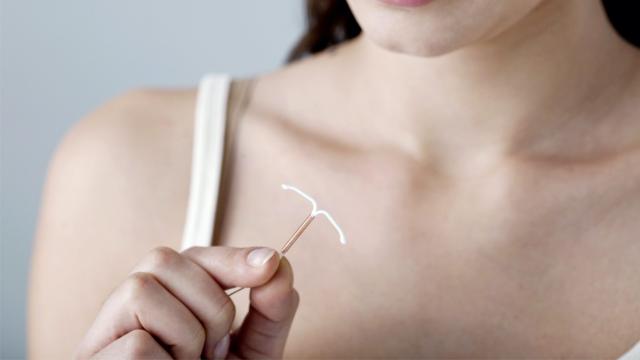With the news that Britney Spears’s conservatorship team refused to allow her to get her IUD removed, several people have pointed out that it’s possible to remove your own IUD — you just grab the strings and pull. If this sounds like a tempting option for the rest of us, you should know that doctors say it’s safest to get the procedure done in the office if possible.
An IUD, or intrauterine device, is a T-shaped piece of plastic or metal that sits in your uterus. It functions as birth control, keeping your uterus baby-free for anywhere between three and 12 years (depending on which kind you get) with 99% effectiveness. Insertion can be painful, but removal is typically quick and painless.
The removal procedure is simple: There are strings on an IUD not unlike a tampon string; even though the IUD is in the uterus, the strings hang down through the cervix into the vagina. You can feel them if you insert your fingers deep enough into your vagina, and many providers advise you to check the strings monthly to make sure they’re still in place. When you get an IUD removed, your provider simply pulls on the strings, like removing a tampon. The IUD should come right out.
That’s what usually happens. But if it doesn’t, what then? As gynecologist Jen Gunter writes, you want to go to a professional for IUD removal, because the professional knows how hard to pull, what to expect, and what to do if things don’t go according to plan:
Pulling out a straightforward IUD doesn’t require 4 years of medical school and then another 4 or 5 years of residency, but identifying when something might not be quite right and knowing what to do about it does. If an IUD has become embedded in the wall of the uterus or in the cervix, there is no way to know before you pull. We pull quite gently because an IUD should really just pop out. If there is resistance, we don’t know if one of the IUD arms just doesn’t want to collapse or if the IUD is embedded in the uterus or cervix.
Gunter had a colleague remove hers, and found that it was stuck. “I am a gynecologist, and I couldn’t tell that something was wrong with my IUD removal until it was already past being wrong,” she said.
While the consensus among doctors is that professional removal is better than DIY, they disagree about how bad an idea it is. Gunter says please don’t try to remove yours at home; others, like those quoted in this Healthline piece, seem to think it’s not too dangerous if you’re well-informed and if you proceed with caution.
Gynecologist Ashley Brant writes that, “while trying to remove your IUD at home is unlikely to be seriously harmful, the primary risk is that it simply won’t work.” The IUD can end up in half-in, half-out of your cervix, which isn’t dangerous but can be extremely uncomfortable. So you’ll have to head over to urgent care to get it taken care of anyway.
Bedsider recommends that if you want your IUD removed but are having trouble getting an appointment, to look around for a provider who can do the job sooner than your regular gyn. (If cost is an issue, check out clinics like Planned Parenthood that offer care on a sliding scale.)
In addition to being safer, professional removal also tends to be quicker, with the bonus that you’ll be able to talk to a provider about what to do next — whether that’s getting a fresh IUD, switching to another birth control option, or planning for pregnancy.

Leave a Reply
You must be logged in to post a comment.